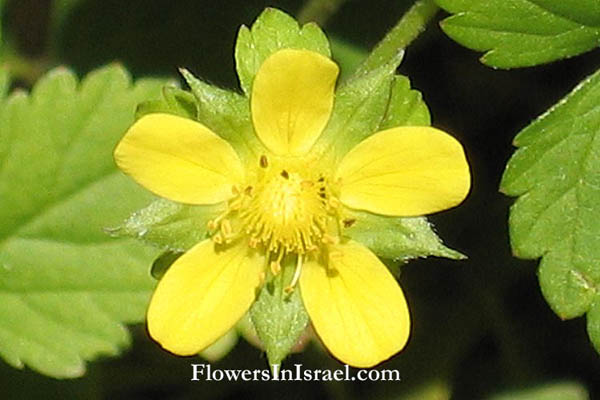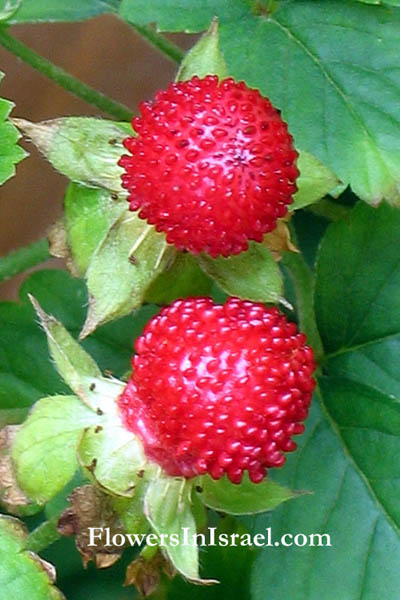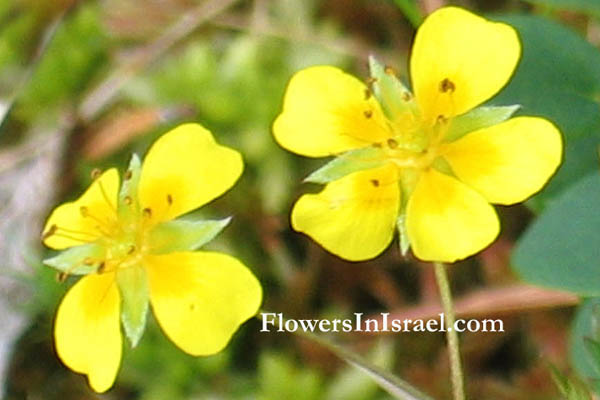Mock Strawberry, Indian strawberry,
Hebrew: תותית הודית, Arabic عشبة القوى
| Scientific name: | Potentilla indica (Andrews) Th. Wolf | |
| Synonym name: | Duchesnea indica (Andrews.)Focke., Fragaria indica Andrews | |
| Common name: | Mock Strawberry, Indian strawberry | |
| Hebrew name: | תותית הודית | |
| Arabic name: | عشبة القوى | |
| Family: | Rosaceae, Rose family, ורדיים |

|
| Life form: | Hemicryptophyte | |
| Stems: | Up to 50cm; height of flowering plant 5-15cm | |
| Leaves: | Trifoliate, rather long-petiolate; leaflets obovate, crenate, with a cuneate (wedge-shaped) base | |
| Inflorescence: | Flower solitary in axils, pedicel 2–13 cm | |
| Flowers: | Hermaphrodite, 5 bractlets, 5 sepals c.10mm; 5 petals c.8mm, yellow; stamens 20, sepals 4–10 mm; bractlets = sepals but wider, obovate, 3-toothed; petals 4–8 mm, obovate-oblong | |
| Fruits / pods: | Receptacle ± 1 cm wide, spheric-ovoid, ± pithy, tasteless; achenes 1–1.5 mm, red | |
| Flowering Period: | April, May, June | |
| Habitat: | Nutrient-rich soil | |
| Distribution: | Mediterranean Woodlands and Shrublands | |
| Chorotype: | South- and Southeast Asia | |
| Summer shedding: | Perennating |

Derivation of the botanical name: Potentilla, Latin potens, powerful; in reference to the medicinal properties of some species. indica, of or pertaining to India, Indian. Duchesnea, named in honor of Antoine Nicolas Duchesne (1747 - 1827), a French botanist and horticulturist. fragarioides, resembling strawberry or Fragaria. Fragaria, Latin fraga, strawberry, which derives from fragrans, fragrant, from the fragrance of the fruit. strawberry, from strewn berry meaning the berries were strewn on the plants; that in time was shortened to strawberry. The Hebrew name: תותית, tutit, from Aramaic: תותא, תות (Post Biblical Hebrew) mulberry; Arabic: tut.

|